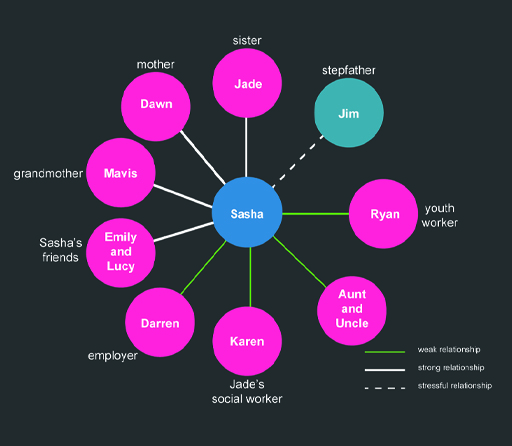2.3 Social exclusion: systemic and ecological perspectives
In social environments, to participate effectively and to achieve some measure of equilibrium, it is important for an individual to anticipate and take into account the effect that their behaviour and attitudes can have on others, and vice versa, as well as considering the multiple other reciprocal and interacting factors present in the social context. Trevithick (2012, p. 323) calls these various elements ‘subsystems’, within the analytical framework for understanding complex connections, known as systems theory.
An ecological perspective is a general form of systems theory. This is where in attempting to assess the needs of an individual person, it is helpful to consider the network of relationships within their family, their groups, and within the community networks in which they live, in the general ‘ecology’ of their lives. An ecological perspective provides an organising framework to assist in understanding and individuals’ circumstances. In addition, social workers can also apply this way of thinking in evaluating and assessing the nature and quality of their relationships and contacts with other professionals and agencies in their professional systems.
Sometimes, it can be useful to illustrate examples of an individual’s social ecology, with a diagram. You will see below a fictional example of an ‘ecomap’ of Sasha’s family, showing the social worker’s assessment of relative strength or weakness of Sasha’s relationships with various key people in her life.
The concept of a social ecology can also be raised beyond the immediate context of the individual’s family and community, to the political and structural decision-making sphere. Examples of these could be the system and ecology of macroeconomics; or choices about social housing and benefit levels; or the competing philosophies of social-democratic, right-wing, and developmental or punitive measures for the distribution of wealth in society. These policies also incorporate directly the type and the extent of social work services available and the levels of local discretion available to individual practitioners.

